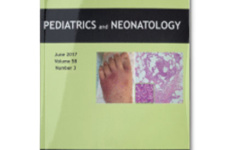
Objective
To evaluate the outcomes of embryo transfer with the use of monopronuclear (1PN) zygotes, and the risks of congenital malformations and postpartum developmental disorders.
Design
Retrospective cohort study.
Setting
Tertiary-care academic medical center.
Patient (s)
This study included patients who underwent single embryo transfer of 1PN frozen-thawed cleavage- or blastocyst-stage embryos. Seventy-six singletons were assessed for congenital malformations and defects in psychomotor development.
Intervention (s)
Monopronuclear frozen-thawed cleavage-stage or blastocyst embryos were compared with 2PN frozen-thawed cleavage-stage and blastocyst frozen embryos, in frozen-thawed embryo transfer (FET) cycles. Neonates from 2PN FET constituted the control group.
Main Outcome Measure (s)
Implantation rate (IR), clinical pregnancy rate (PR), miscarriage rate, live birth rate, congenital malformations, and motor and language development status were compared.
Result (s)
The cohort comprised 186, 676, 133, and 502 patients consenting to FET with, respectively, 1PN cleavage-stage, 2PN cleavage-stage, 1PN blastocystocyst, and 2PN blastocystocyst embryos. The IR, PR, and live birth rate were lower in 1PN than with 2PN cleavage-stage FET, but similar between 1PN and 2PN blastocystocysts.
Miscarriage rates did not differ significantly between 1PN and 2PN cleavage-stage or blastocystocyst FET. Risk of congenital malformations and defects in psychomotor development did not differ significantly within 2 years postpartum with the use of 1PN or 2PN FET.
Conclusion (s)
The present results suggest that the value of 1PN blastocyst FET is similar to that of 2PN blastocyst FET, without an increased risk of miscarriage rate, congenital malformations, or defects of psychomotor development.
Jiqiang Si, M.D., Xiuxian Zhu, M.D., Qifeng Lyu, Ph.D., Yanping Kuang, M. D














